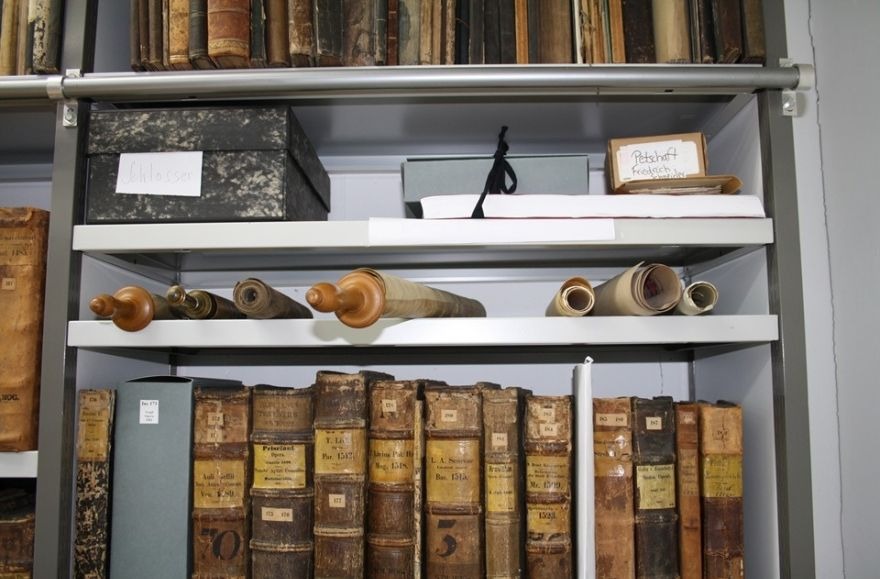JERUSALEM (JTA) — When Leor Jacobi visited a Catholic library in the German city of Mainz to examine its Judaica collection, he was surprised when library officials showed him three centuries-old Hebrew scrolls that had been sitting on a dusty shelf for some 50 years.
Jacobi, a doctoral candidate in Jewish art at Israel’s Bar-Ilan University, visited Mainz in March. He was there as a guest of the Johannes Gutenberg University to study the particular Mainz version of the Yom Kippur prayer book. Mainz is known as Magentza in Yiddish.
During a visit to the Martinus Library, Jacobi was able to view its impressive Judaica collection, including rare books and manuscripts. Library director Helmut Hinkel then brought out three scrolls that were never catalogued and asked Jacobi to tell him what they were.
Jacobi determined that two of the scrolls were Ashkenazi versions of the Book of Esther that were at least 200 years old. The third was the beginning of a Samaritan Torah scroll, including the chapters of Genesis and Noah.
The scrolls, he was told, had been purchased from a souvenir dealer for about $25 by Nikolaus Adler, a Catholic priest in Mainz who died in 1970, while he was on a visit to Israel in the 1960s. Adler said they had been sitting on a shelf in his former library office in the library for 50 years.
Jacobi wrote a one-page summary about each of the scrolls for the library, so that its officials would understand what they had in their possession, never imagining that he would see the scrolls again.
He told the Jewish Telegraphic Agency that one of the Esther scrolls, unique in that it was written in columns of unequal length, must have had sentimental value to its owner since it was housed in a custom brass container. Jacobi wondered aloud, not for the first time, how it ended up in the hands of an Israeli souvenir dealer, sold to a priest and taken to Germany.
Not long after he returned to Israel, Jacobi got a call from Hinkel asking if he would like to help the Mainz library give the scrolls to a library in Israel. Jacobi said he consulted with his mentors at Bar-Ilan and they all agreed that the scrolls should be deposited with the National Library of Israel.
Jacobi, who has a master’s degree in Talmud, agreed to return to Mainz last month to retrieve the scrolls, and delivered a lecture related to the Book of Esther as part of the handover ceremony.
And when he was handed the scrolls there was a fourth, which had been discovered behind some of the books on that same dusty shelf. And this one was a bit rarer: a Song of Songs scroll. (Song of Songs is read in synagogue on the Shabbat of Passover.)
The Esther scrolls will join the National Library’s collection of approximately 200 partial and complete Esther scrolls from the 15th-20th centuries, which originate from Europe as well as Yemen, Iran, Iraq and northern Africa. The library also owns eight Samaritan Torah scrolls from the 13th-20th centuries.
JTA has documented Jewish history in real-time for over a century. Keep our journalism strong by joining us in supporting independent, award-winning reporting.






